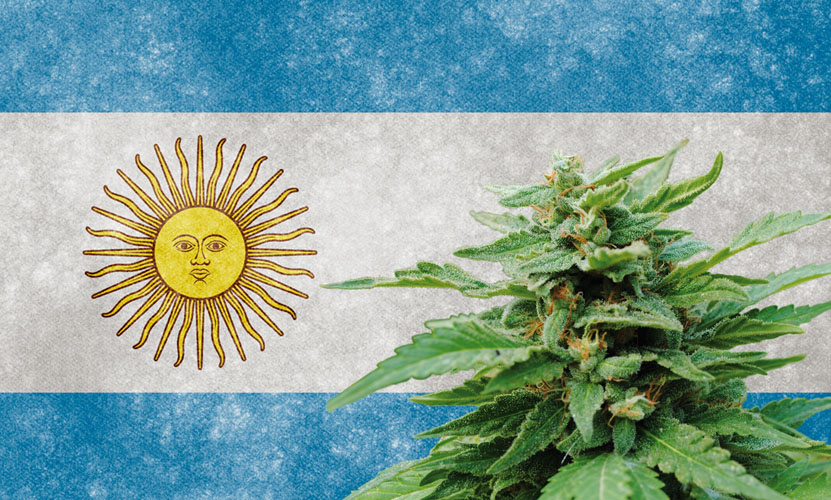RIO DE JANEIRO, BRAZIL – Argentina is opening up to the medical cannabis market and the hemp industry, a “new” productive sector with which it hopes to treat the symptoms of a suffering economy. Specialists see medical marijuana as a sort of panacea, capable of being used to treat several diseases and expand the field of medical research.
In early May, Parliament passed a law, enacted this week by President Alberto Fernandez, which authorized private producers and marketers to initiate strategies to ensure the safety, quality, control, and traceability of the production chain, something that since 2017 was reserved for the State and authorized for therapeutic, palliative and scientific use of cannabis.
The creation of the Regulatory Agency of the Hemp and Medical Cannabis Industry (Aricame), which emerged with the new law, will allow the regulation of this industry to create new jobs, develop a productive economy in several provinces of the South American country, and generate exports.

The coordinator of Aricame, Silvia Kochen, a neuroscientist and Conicet researcher, told EFE that the agency “will facilitate clinical research, experimental models and studies for greater transparency and safety. Both for those who produce and for users of medical cannabis”.
The Ministry of Productive Development sees a diamond in the rough with enough economic potential to prophesize that by 2025, 10,000 jobs will be generated and more than US$500 million a year in sales to the domestic market and export revenues exceeding US$50 million.
Hemp, a variety of the cannabis plant, can be used in the clothing industry for its highly resistant fibers, biofuels production, low-impact housing construction, and paper manufacture due to its high cellulose content.
Soil cleaning for agricultural use is one of its less popular uses but is valuable due to the absorption of contaminating residues and toxins stored in the soil.
As far as domestic production is concerned, Argentina has at least eight different varieties of cannabis seeds, saving costs and avoiding imports.
“Having the seed means great potential for users and research. Argentina has the appropriate human resources, committed to the subject on all fronts: scientific researchers, universities, health professionals, producers, and, fundamentally, those who need its benefits,” explained the institution’s coordinator.
THE PLANT OF MULTIPLE USES
“Argentina will be part of the 50 countries that will regulate and develop access to a medicine, with a certain degree of medical coverage and the benefits sought in the fight against diseases,” explained the specialist in medical cannabis (endocannabinology) and neurologist, Alejandro Guillermo Andersson.
For the specialist, medical cannabis must be integrated as a new therapeutic tool with the rest of the usual medicines.
“The list of pathologies and symptoms to be treated is increasingly extensive within and outside neurology, as in the use for refractory epilepsy, multiple sclerosis, cerebral lesions and paralysis, autism, oncological pain, among others,” he enumerated.
The diseases to be treated are almost as extensive as their pharmaceutical applications, which can come in the classic oil, passing through patches and ointments, up to solutions to vaporize. The panacea theory is gaining strength, but for Andersson, it is nothing more than a complement when it comes to curing ailments without forgetting the rest of modern medicine.
“In oncological pain, opioids may not be enough; if you add cannabis, you reduce the ailments by 20% or 30%, and you move away from the limit at which opiates are dangerous,” he added.
According to the neurologist, scientific studies have shown improvements in 30% of the patients with autism. In general, treatments focus on medications for peripheral problems and not for the lack of emotional intelligence and contact with their relatives.
“It is worth trying when you have a disease with no specific product,” said the expert.
There are two components regarding adverse and addictive effects: tetrahydrocannabinol (THC), which is psychoactive, and cannabidiol (CBD), which modulates the psychoactive effect. They can compromise memory and generate hallucinations and transient disorientation in high doses, although everything will depend on the patient’s genetics and metabolism.
“The addiction is very low compared to benzodiazepines (antidepressants), which are sold in pharmacies; in the world of medical cannabis, you will not encounter this problem,” he assured.
Finally, the doctor talked about “adult consumption” and recommended avoiding marijuana combustion due to the damage it causes to the respiratory membrane.
“If you put the same product in a vaporizer where you have a ceramic or zirconium chamber, there is no combustion, and you do not damage the respiratory tract. I often use it in an urgent therapeutic way because the organism can absorb it in minutes compared to oils that take hours,” concluded Andersson.
With information from EFE

